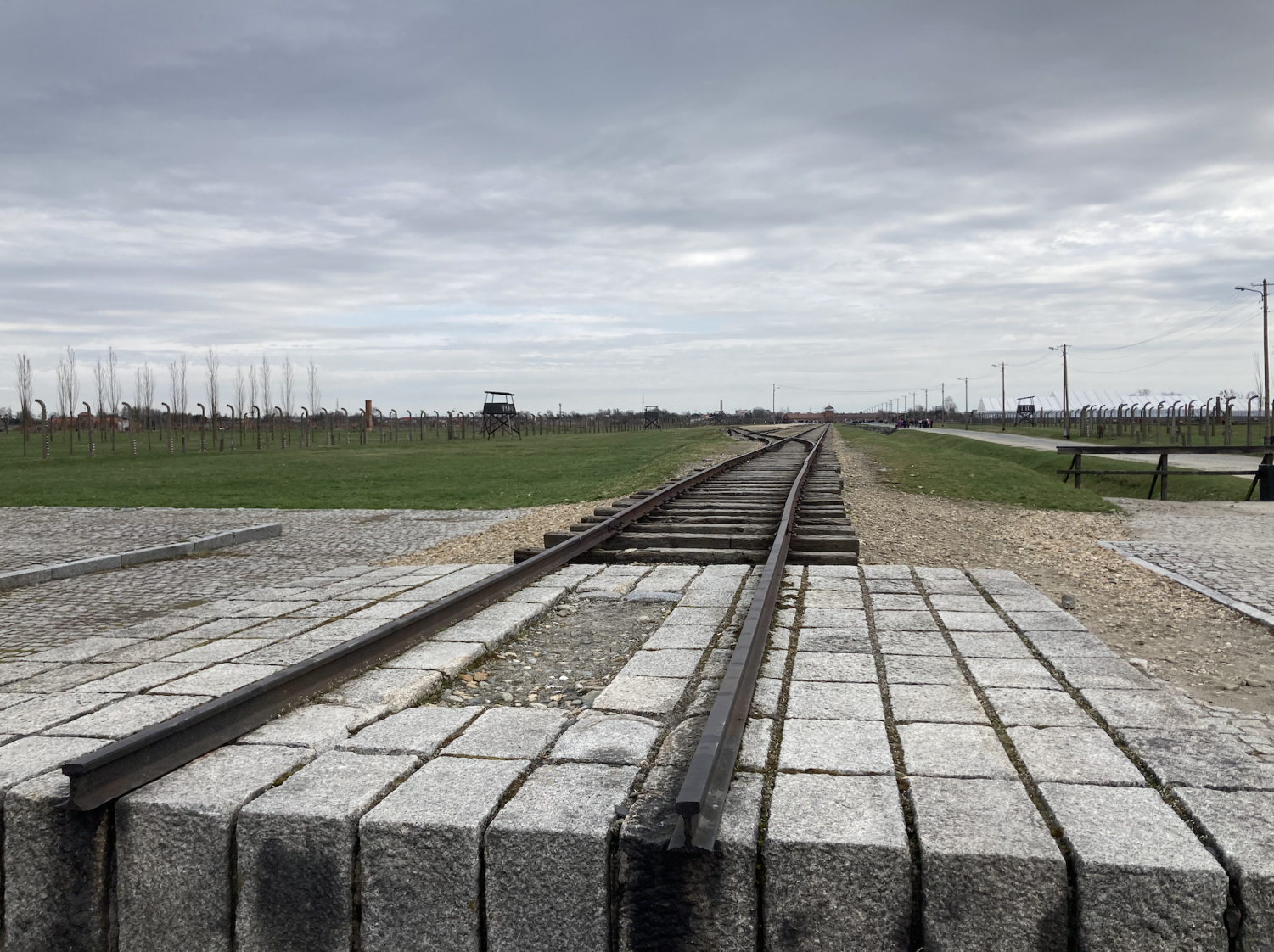For my SSP I chose the Holocaust Memorial trip to Germany, Czechia, and Poland. We visited concentration camps and Nazi rally grounds as well as buildings and cathedrals built as far back as the 1300s. At these sites we immersed ourselves in the histories of these countries, from the medieval Habsburg empire to occupation under the Soviet Union.
The route of our SSP followed the history of the Nazi party. First, we went from Munich where the party was founded and where Hitler carried out the Beer Hall Putsch to Nuremberg where massive Nazi rallies were held and where the Nuremberg laws, outlining discrimination against Jews, were passed. In Germany we also visited Dachau, one of the earliest concentration camps, founded as a prison and labor camp for the Nazis’ political opponents. Then we crossed the border into the Czech Republic, and on our way to Prague drove through the Sudetenland, which the Allies ceded to Hitler in an unsuccessful policy of appeasement. Before leaving Czechia we visited the Terezín camp, “beautified” for propaganda in a Nazi film The Fuhrer Gives the Jews a City and for a visit from the Red Cross. In Czechia we also visited the medieval city of Olomouc. In Poland we traveled to Kraków and saw the Kazimierz Jewish Quarter, a segregated neighborhood created centuries before the war, as well as the neighborhood that was the city’s ghetto during the war.
On the last day of our trip we drove to Auschwitz-Birkenau.
Each camp had its own impact and lessons, but honestly it’s impossible to put into words the feeling of standing in Auschwitz-Birkenau, a place of so much death. Over a million people were killed there. 90% were Jewish. The largest nationality was Hungarian.
The tour of Auschwitz-Birkenau consisted of two parts.The first is the smaller part of the complex, built early in the war with brick as a concentration camp for political prisoners, and now used as a museum. The second part is the larger, massive site with wooden housing and multiple gas chambers, built as a death camp for the Nazis to carry out their Final Solution.
In the first part of camp, we saw “hospitals” (read torture and experiments, not healing), claustrophobic prison cells, and the only gas chamber still standing in the complex. The other gas chambers were destroyed by the Nazis, who would have destroyed the whole camp to cover up their tracks if it had not been liberated in time. We also saw sites of hangings and shootings, and displays of personal items. Personal items, for the most part, were displayed behind glass in massive piles, except for the prayer shawls which were respectfully laid out. We saw piles of eyeglasses, shoes, children’s shoes, pots, pans and plates. I think what impacted me the most was the pile of prosthetics, such as prosthetic arms and legs and back braces. These were symbols so obviously human. These prosthetics, which are often expensive and vital for everyday life, were just carelessly thrown in a pile. Disabled Jews would have been immediately sent to the gas chambers because they weren’t efficient workers.
The gas chambers were terrifying to walk through. I honestly felt the need to hold my breath.
The museum also housed the original canisters of pesticide that was used as a killing agent in the chambers. (Pesticide! From a company that still operates today). Even though they were empty and behind glass, I didn’t want to be anywhere near these chambers.
The second part of the tour really showed the scale of the camp and of the tragedy. In the center of rows of wooden housing stretched train tracks. As we walked along the tracks we saw the houses, which now require supports to stand because they were not intended to last long. As we stood on the train platform where selections were made for death and for labor, I thought of the pictures in the museum, taken in this exact spot. One of the saddest realizations was that many of the people didn’t know they were being sent to death. There was one photo of a woman coming off a train who instinctively smiled for the camera. The SS didn’t even bother to write down those who were selected immediately for the gas chambers. Today those people remain nameless.
I would not have had this opportunity without Agnes Irwin’s Special Studies Program and my group leaders Mr. McCormick and Ms. Teredesai. Global SSPs truly offer incredible learning experiences. I hope that doesn’t sound too cliché to say that this experience was for me, transformative. I really encourage every student to take advantage of this opportunity.








